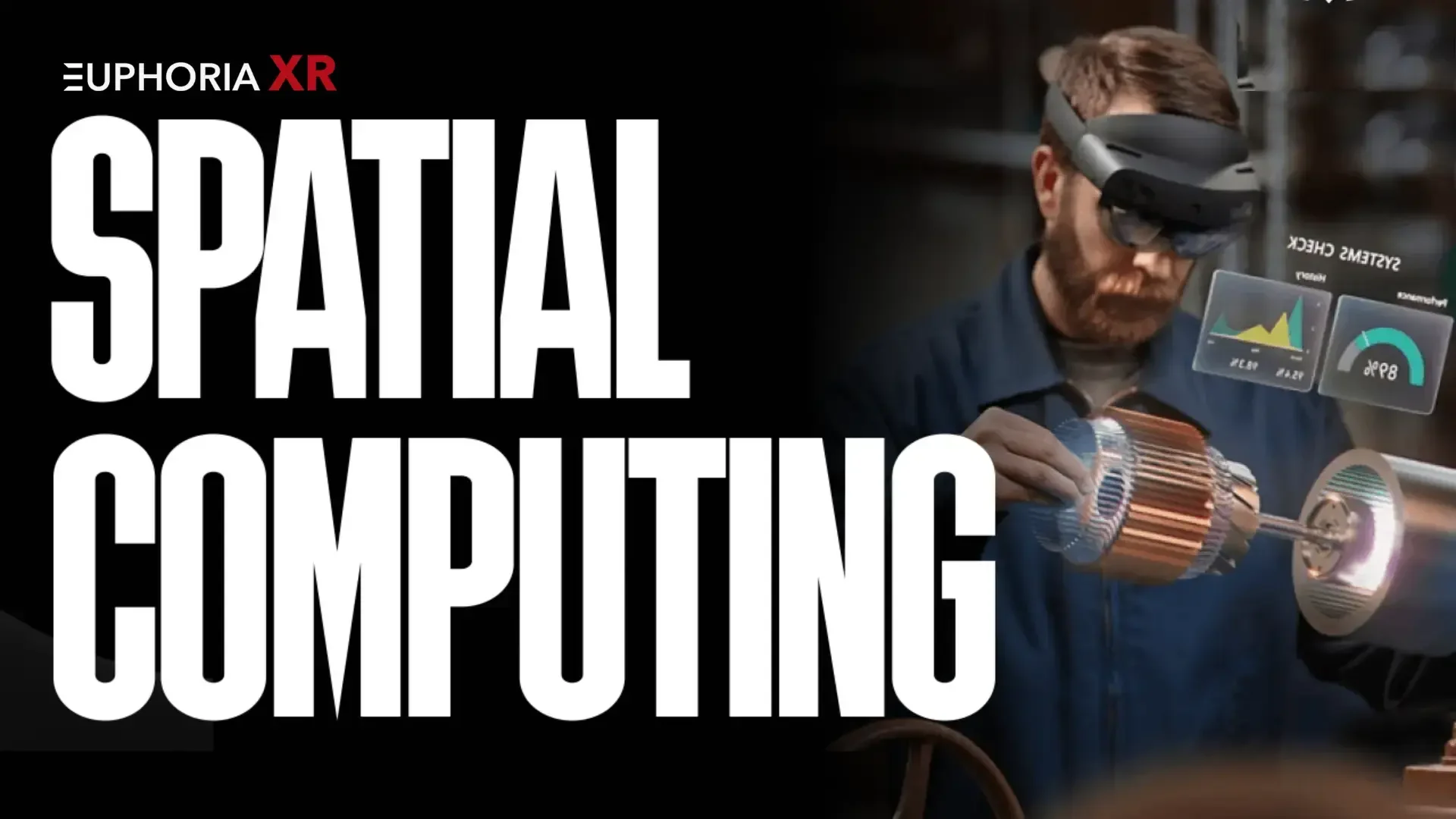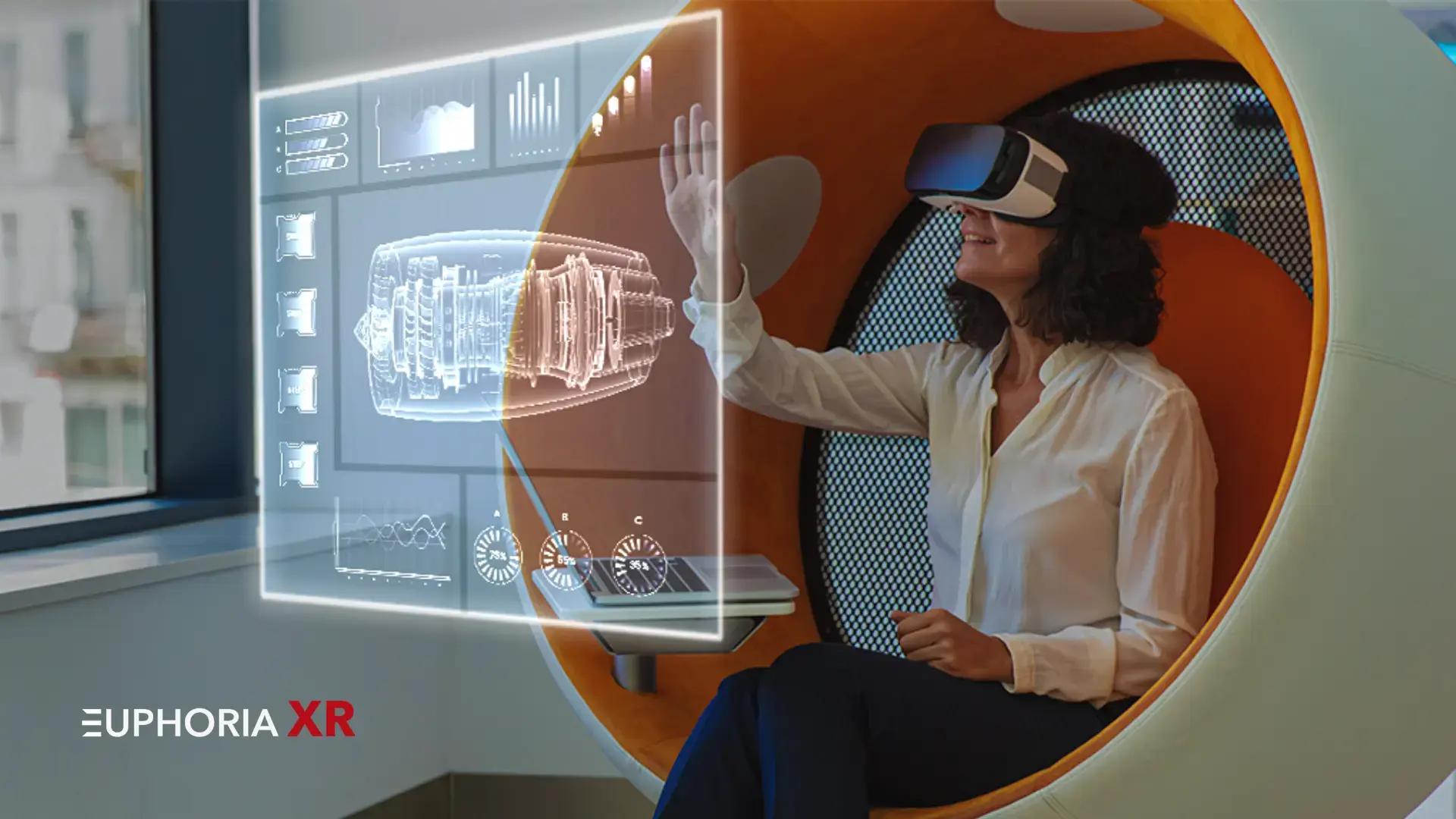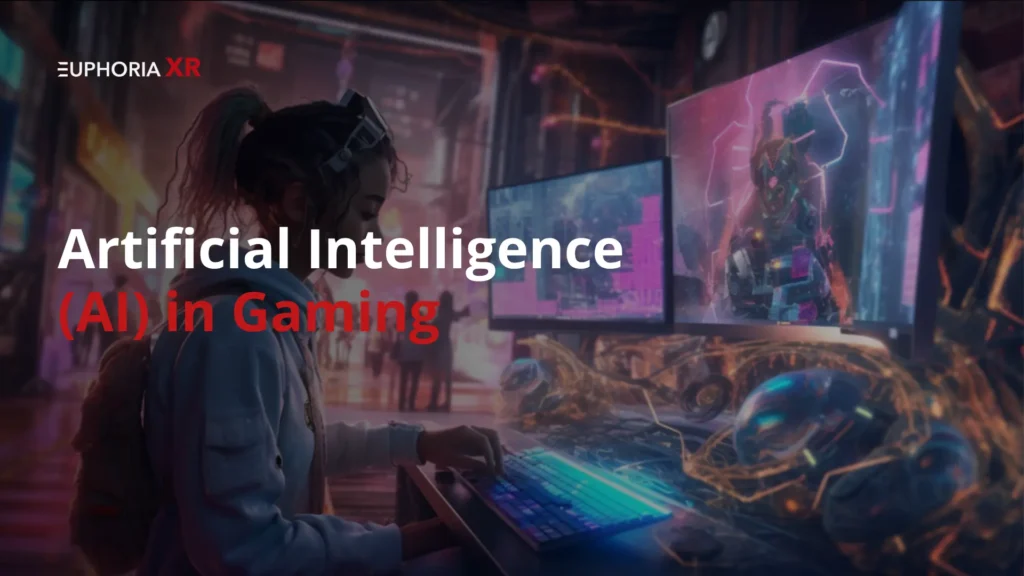Imagine a technology that interacts with your surroundings in real-time, extending beyond just a screen and blending into your physical environment. Spatial computing is a revolutionary technology that understands depth and dimensions in ways similar to the human eye, bridging the gap between the physical and digital worlds. Our guide will explore how this technology seamlessly integrates both realms.
With spatial computing, your environment becomes an interactive platform where your movements and gestures influence digital interactions. This enables deeply personalized, immersive experiences that can transform how businesses engage with customers.
Euphoria XR is a custom AR/VR Metaverse Development & Consulting Services dedicated to creating immersive digital experiences. We guide you through using AR/VR technology to elevate customer engagement and boost innovation within your business.
Spatial Computing Market Stats
The spatial computing market is rapidly growing, fueled by technological advancements and increasing adoption across various sectors.
According to Grand View Research, the market was valued at USD 128.2 billion in 2023 and is expected to reach USD 469.8 billion by 2030, expanding at a compound annual growth rate (CAGR) of 20.4%.
In another analysis, the market size was valued at USD 97.9 billion in 2023, with projections for a CAGR of 23.4% from 2023 to 2028.
Additionally, another report estimates the market reached USD 105.9 billion in 2022 and is predicted to grow at a CAGR of 19% from 2023 to 2032.
What is Spatial Computing?
Spatial computing allows computers to map, interpret, and engage with the physical environment in real-time. Unlike traditional digital interactions that occur on flat screens, spatial computing embeds digital content into a user’s real-world environment, allowing for seamless interaction. This is made possible by combining sensors, AI, and immersive technologies like AR, VR, and MR, which merge the physical and digital worlds.
Spatial computing offers a more intuitive way to interact with technology, using the real world as a reference point for digital content. Augmented reality (AR) overlays digital information onto the physical world, while virtual reality (VR) immerses users in fully digital environments. Mixed reality (MR) combines both, allowing digital objects to interact with the physical space around the user.
Core Technologies Driving Spatial Computing
Several key technologies are propelling the rise of spatial computing, making it more accessible and effective across industries:
Augmented Reality (AR): Augmented Reality (AR) enriches the physical world by overlaying digital elements, making it widely used in navigation, gaming, education, and e-commerce.
Virtual Reality (VR): VR immerses users in entirely digital spaces, offering applications in entertainment, education, training, and more.
Mixed Reality (MR): MR allows users to interact with both the physical and digital worlds, making it ideal for architecture, design, and collaborative work.
Artificial Intelligence (AI): AI enables real-time analysis and responsiveness in spatial computing, allowing systems to adapt and react to their environment.
Digital Twins: Digital twins create virtual replicas of physical objects or systems, offering the ability to simulate, test, and optimize real-world scenarios in industries like manufacturing and urban planning.
Read Next: Chat GPT-5: Next Generation of The AI Language Model?
Technologies in Spatial Computing
Several key technologies contribute to the development and efficiency of spatial computing, enhancing how we interact with both digital and physical environments:
Mixed Reality Headsets:
Devices like the Apple Vision Pro, Microsoft HoloLens, and Magic Leap are vital in the spatial computing landscape. These headsets enable users to engage with digital objects integrated into their real-world environment. By merging the power of AR and VR, they create immersive experiences in areas ranging from entertainment to industrial design and education.
Sensors and Cameras:
These tools are essential in spatial computing, allowing systems to accurately analyze and react to their environment. For instance, advanced sensors and camera technology in devices like Apple’s Vision Pro help precisely track environments, gestures, and objects. Researchers from institutions like MIT, including Simon Greenwold, are continually improving how sensors and cameras are used in spatial computing applications.
GPS and Lidar:
GPS (Global Positioning System) and Lidar (Light Detection and Ranging) are essential for spatial computing, providing precise mapping and localization of physical environments. These technologies offer real-time data about the position and movement of objects, which is particularly useful in industries such as autonomous vehicles, construction, and agriculture. Lidar, for instance, is often used for detailed environmental scanning.
Digital Twins:
Digital twins are virtual replicas of physical objects or systems, allowing for simulation and optimization without impacting the real-world counterpart. Microsoft and other companies are actively developing digital twin solutions for industries like facility management and urban planning, highlighting the efficiency and problem-solving potential of spatial computing.
Real-World Applications of Spatial Computing
Spatial computing has already begun making a significant impact in various sectors, such as:
Healthcare: AR and VR technologies allow healthcare professionals to visualize complex medical data, conduct virtual surgeries, and simulate training environments, improving patient care and medical education.
Manufacturing: Spatial computing, through technologies like digital twins, enhances predictive maintenance, real-time monitoring, and simulation capabilities, reducing operational downtime and increasing efficiency.
Retail: AR technology helps customers visualize products in their real-world environments before purchase, while VR can offer immersive shopping experiences, thus driving engagement and personalization.
Education: Virtual classrooms and AR-enhanced lessons bring abstract concepts to life, providing students with a more engaging and interactive learning experience.
Entertainment: The gaming industry continues to push the boundaries of spatial computing with VR games offering fully immersive experiences, while virtual concerts and events expand the possibilities for social and entertainment interactions.
Read Next: AWE 2024: All the AR, VR and Haptic Experiences at Augmented World Expo
The Future of Spatial Computing
Spatial computing is set to become integral to daily life as technology evolves. Some trends to watch for include:
Enhanced Device Integration: With AR glasses and mixed reality headsets becoming more compact and accessible, spatial computing will increasingly blend into everyday life, making digital interactions feel natural.
Advances in AI: AI’s role in spatial computing will expand, making systems more capable of understanding human behavior and the environment, leading to more personalized and responsive interactions.
Wider Industry Adoption: As industries such as healthcare, education, and manufacturing continue to see the value in spatial computing, its adoption will become more widespread, from immersive training to enhanced data visualization.
Collaborative Workspaces: The rise of remote work will likely drive demand for spatial computing solutions replicating physical work environments, allowing teams to collaborate in virtual spaces.
Smart Cities and Urban Planning: Digital twins and other spatial computing applications will be central to developing smart cities, optimizing everything from energy management to urban design.
As spatial computing continues integrating more advanced technologies like AI, 5G, and real-time rendering, it will reshape how we interact with digital and physical worlds, making these interactions more dynamic and intuitive.
Final Note!
For business leaders seeking to stay ahead of the competition, adopting spatial computing solutions is essential for driving innovation. Organizations that use spatial data—enhanced by IoT, Digital Twins, AR, VR, and Simulation—can explore new opportunities and gain a strategic edge.
As AI and machine learning advance, 3D workflows become more automated, and industries like healthcare and manufacturing rapidly adopt immersive technologies.
To meet this demand, Deloitte and AWS (Amazon Web Services) are developing a scalable spatial data management solution. It also integrates with AWS Marketplace, making it easier for businesses to deploy the right tools. This platform will simplify data ingestion, transformation, and distribution while ensuring scalability, security, and compliance.
















